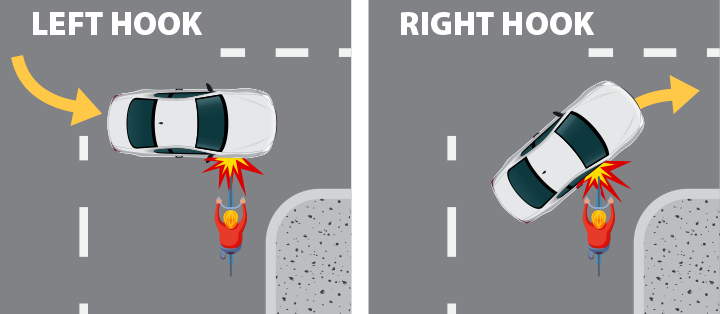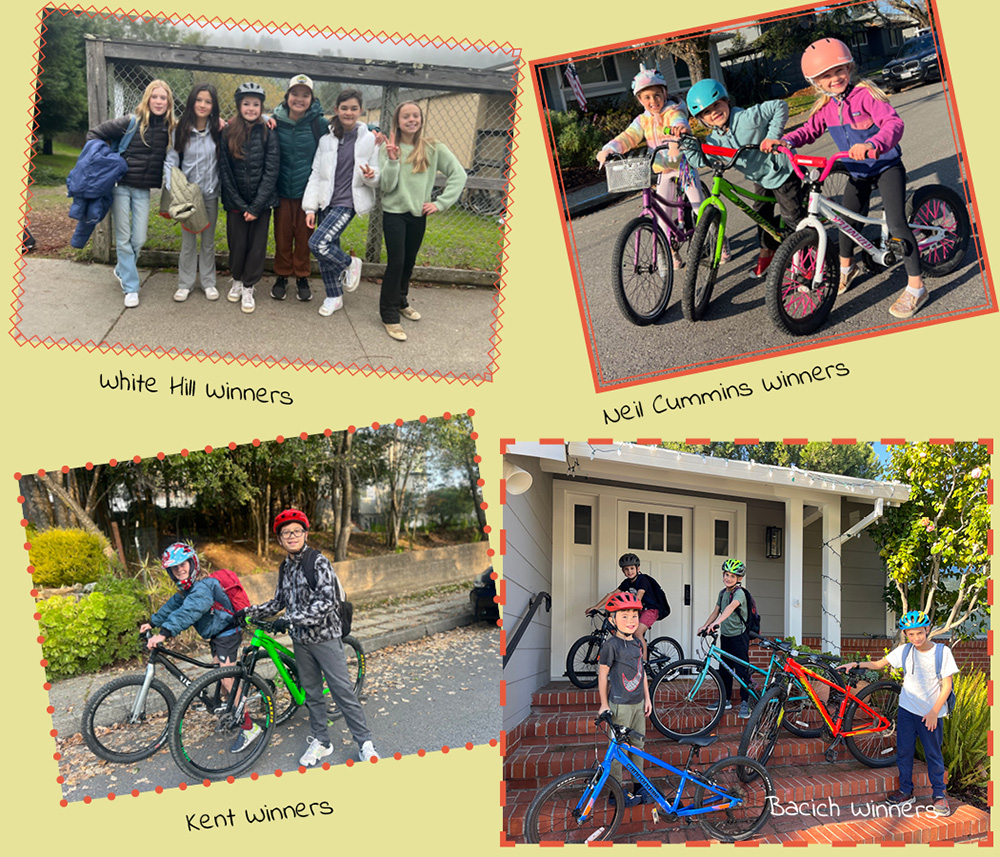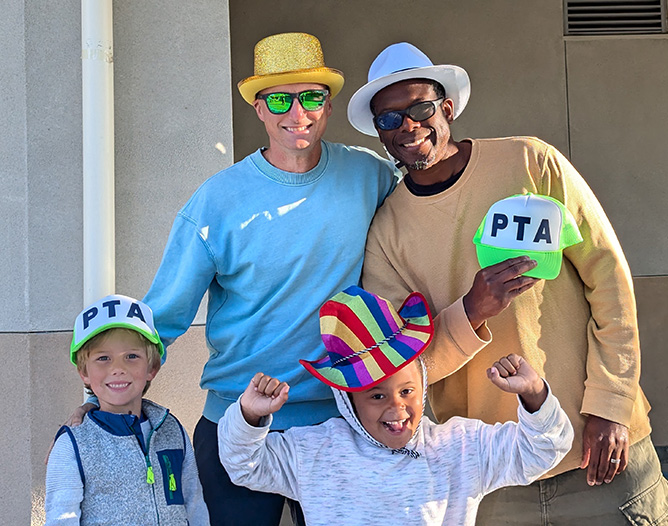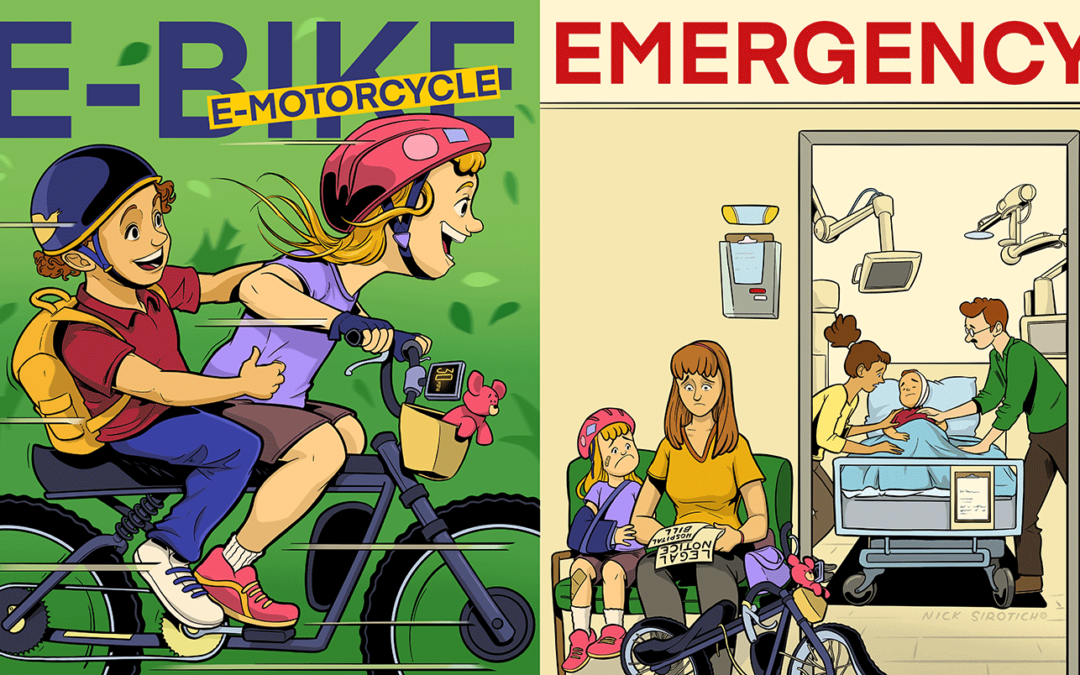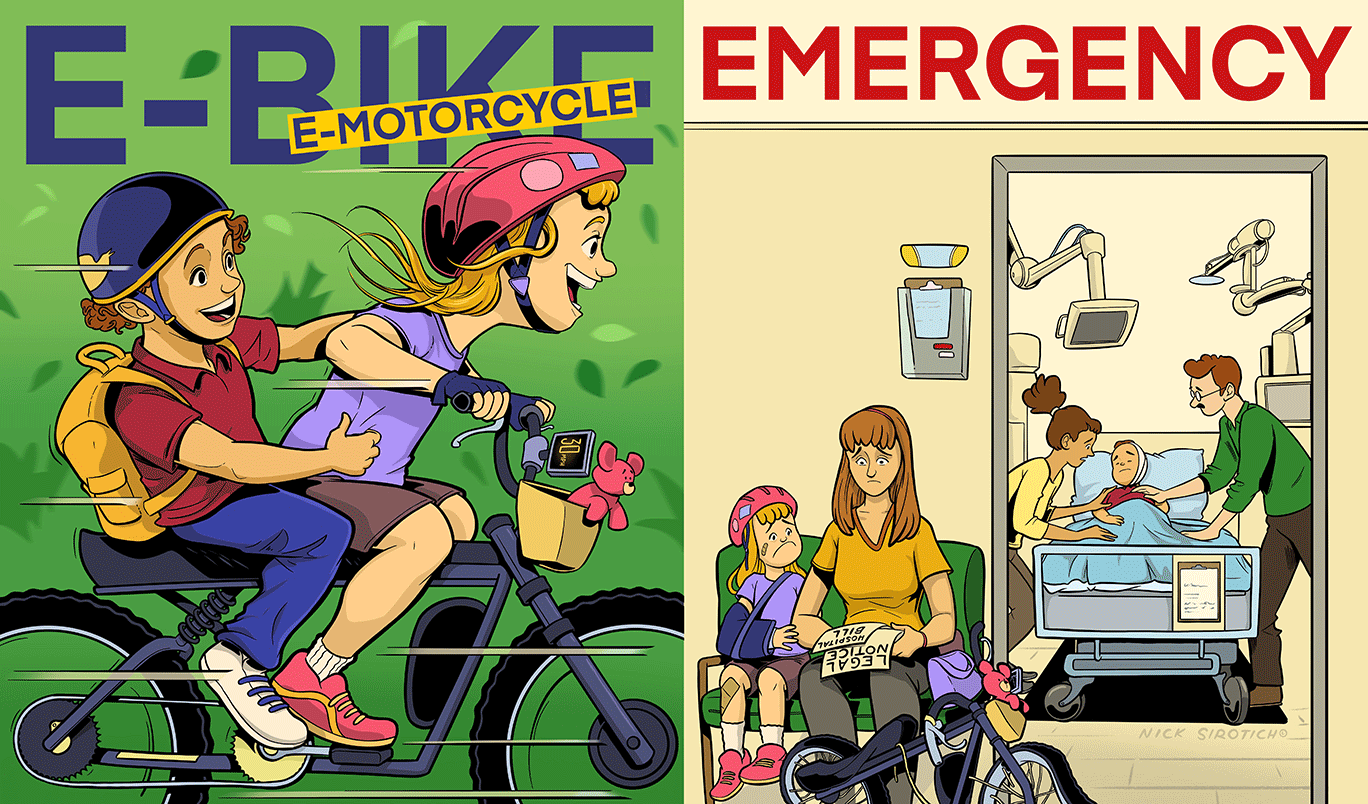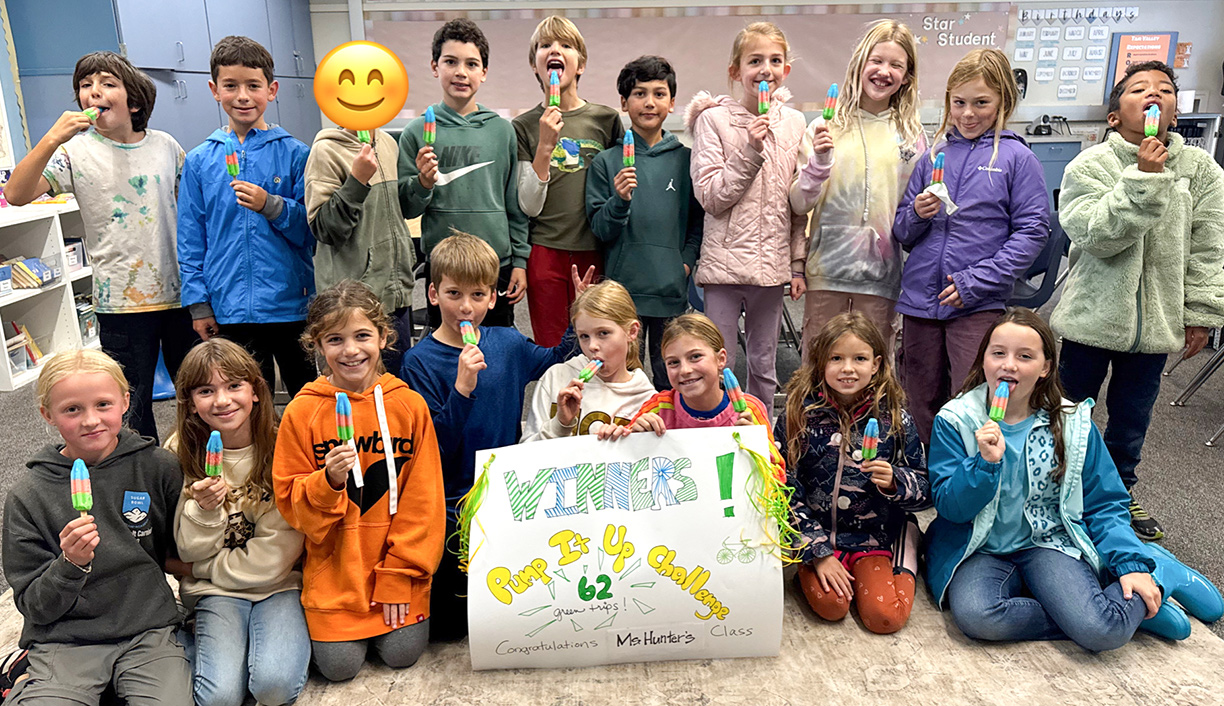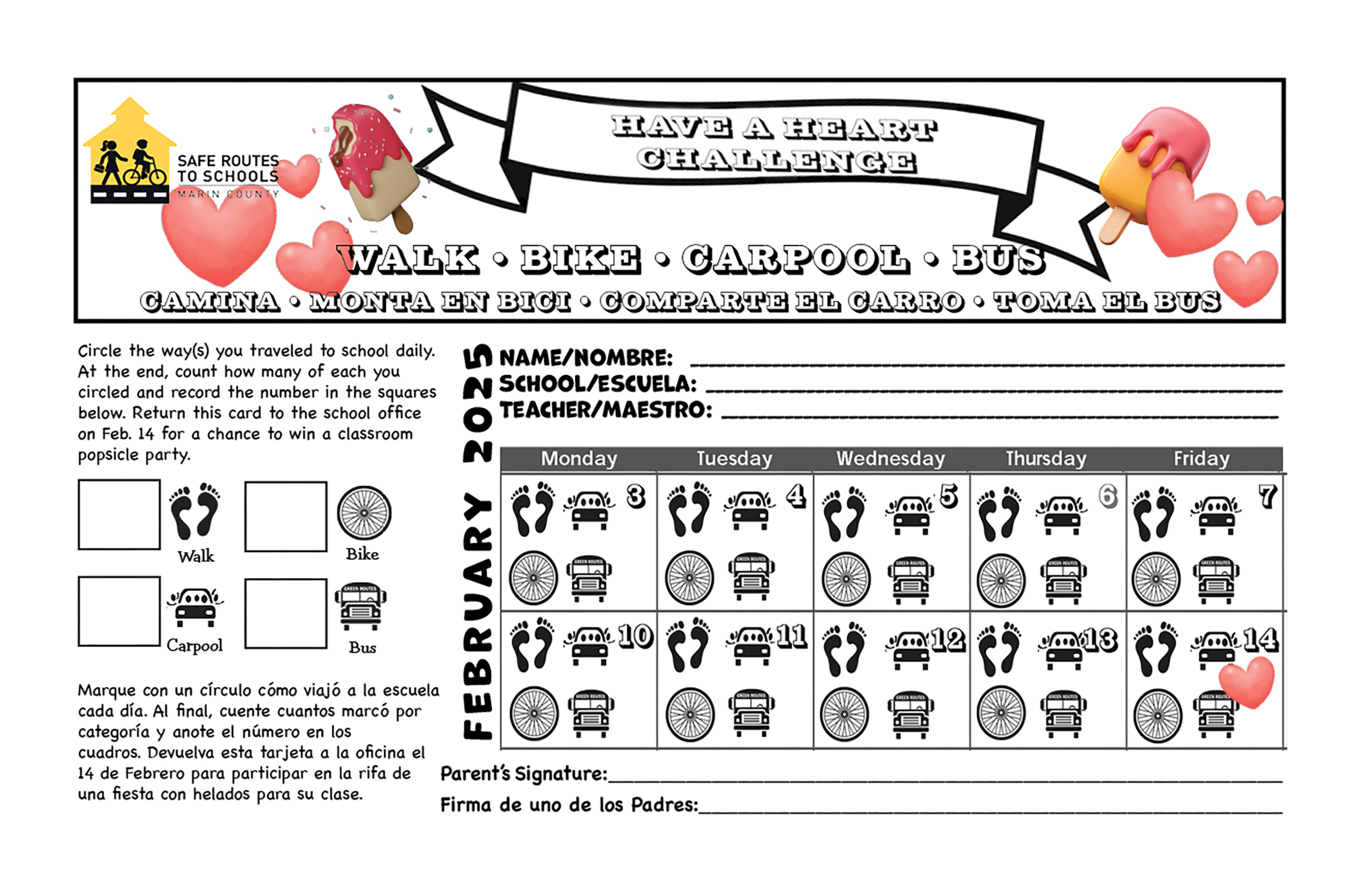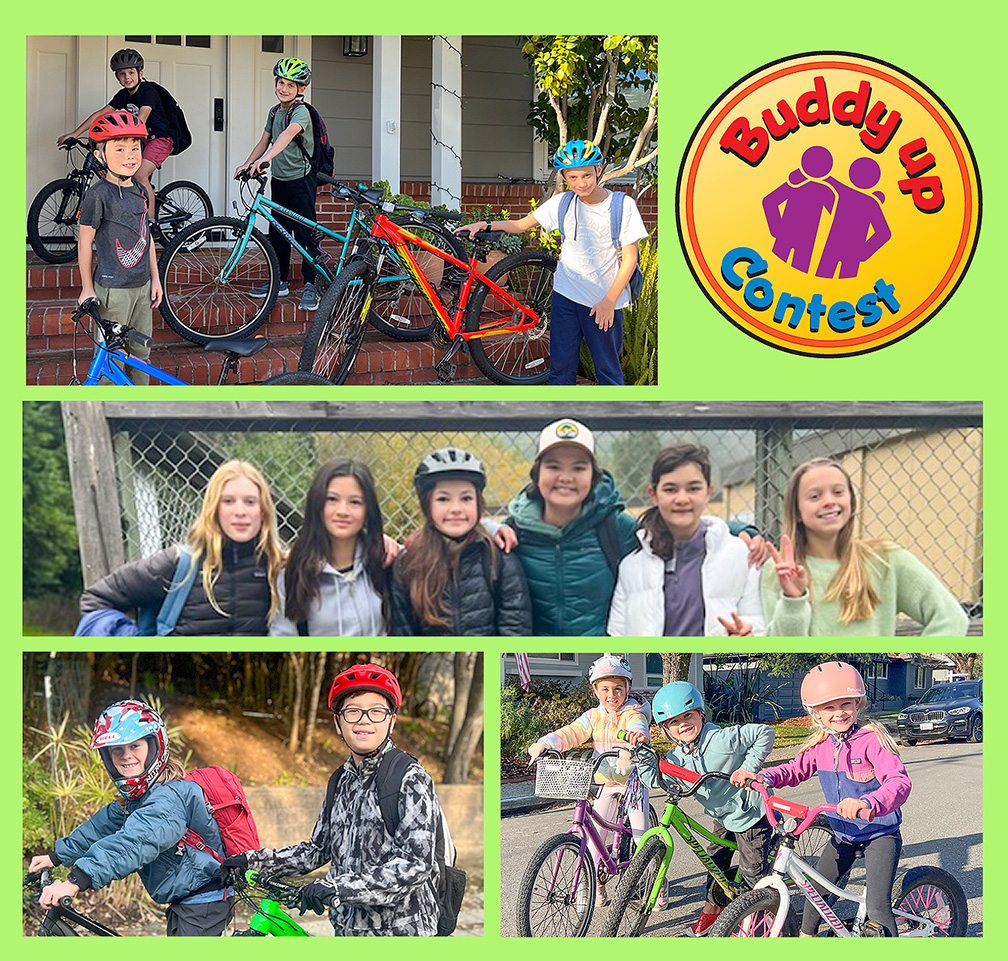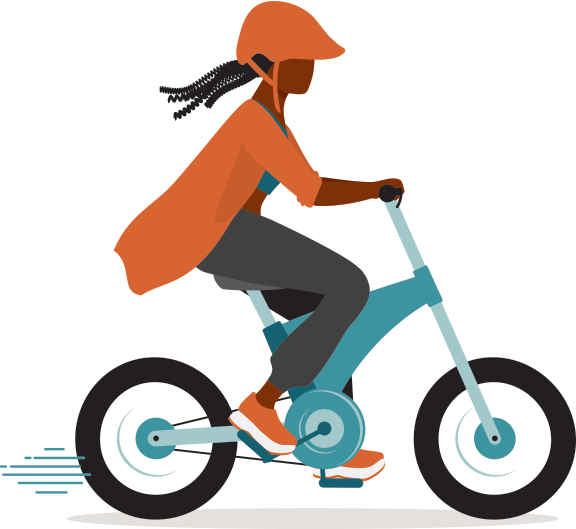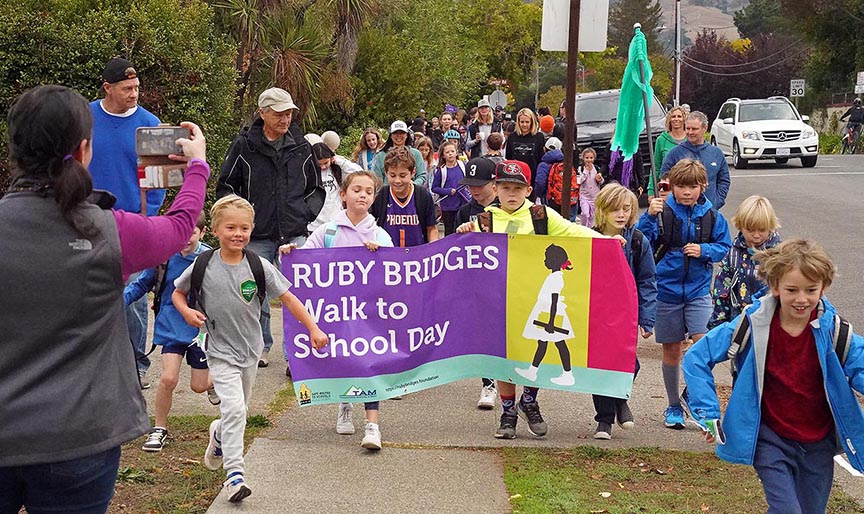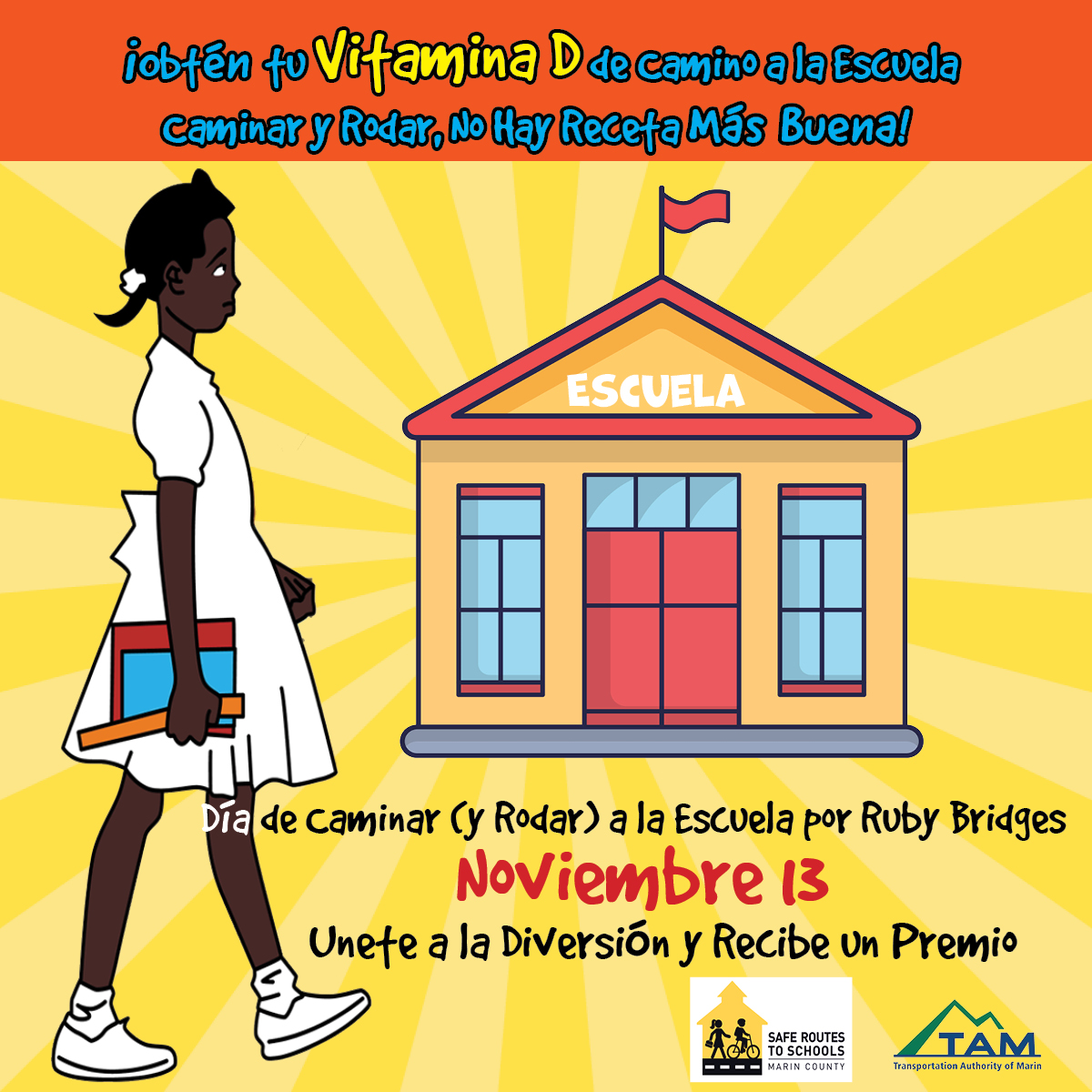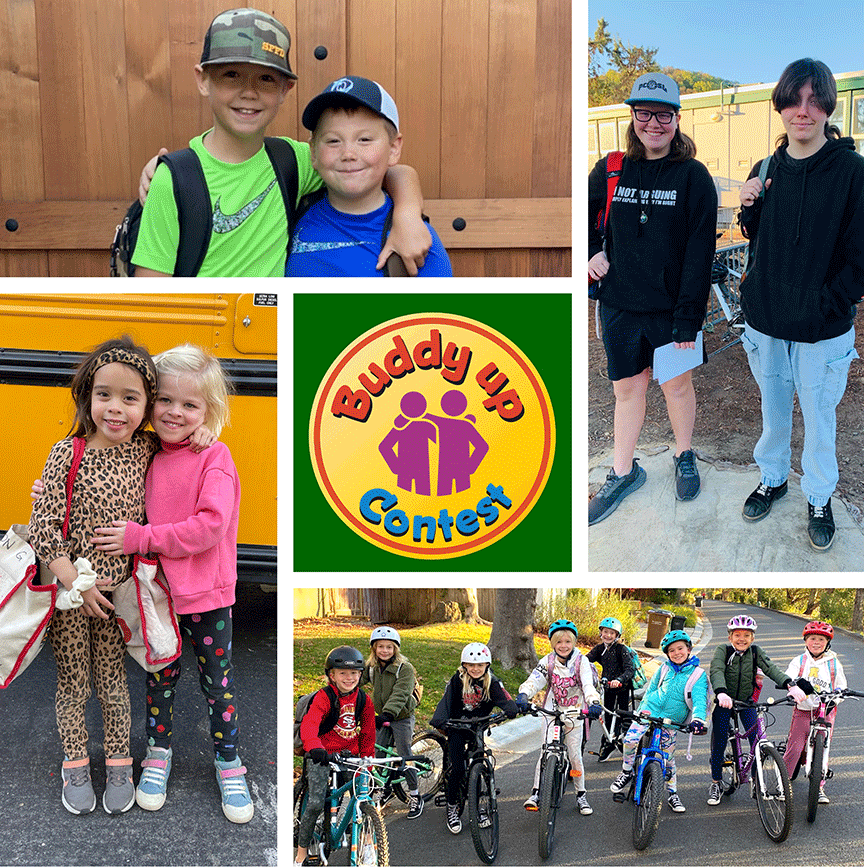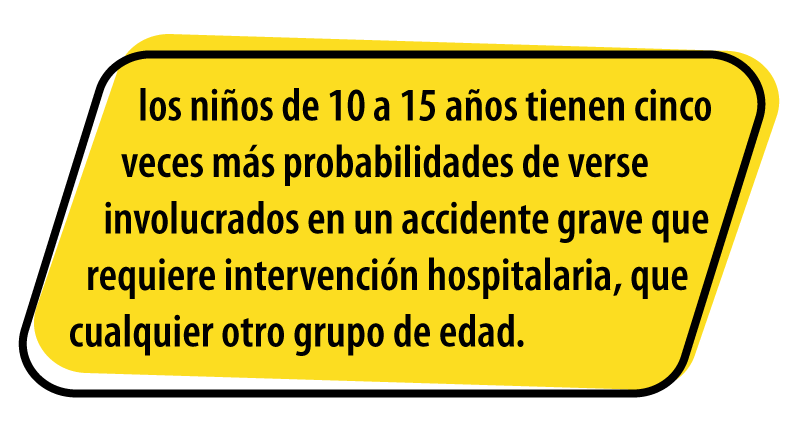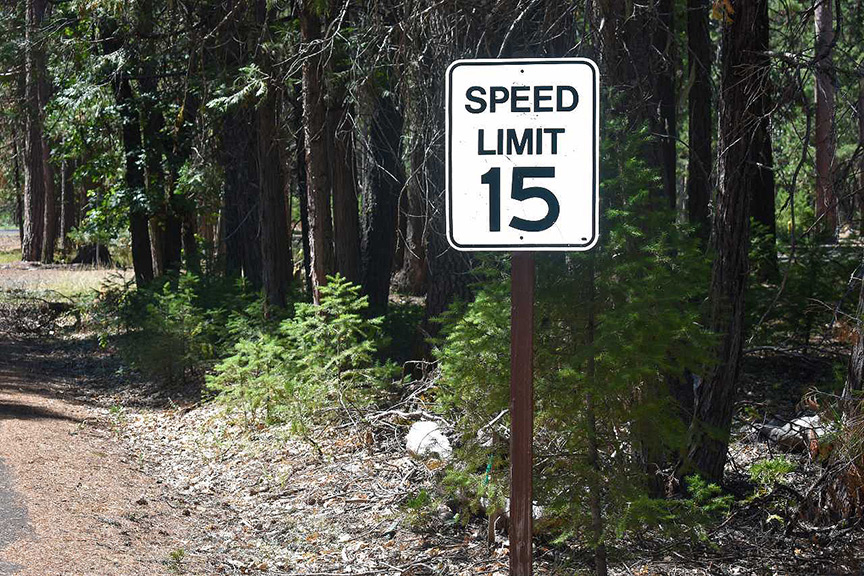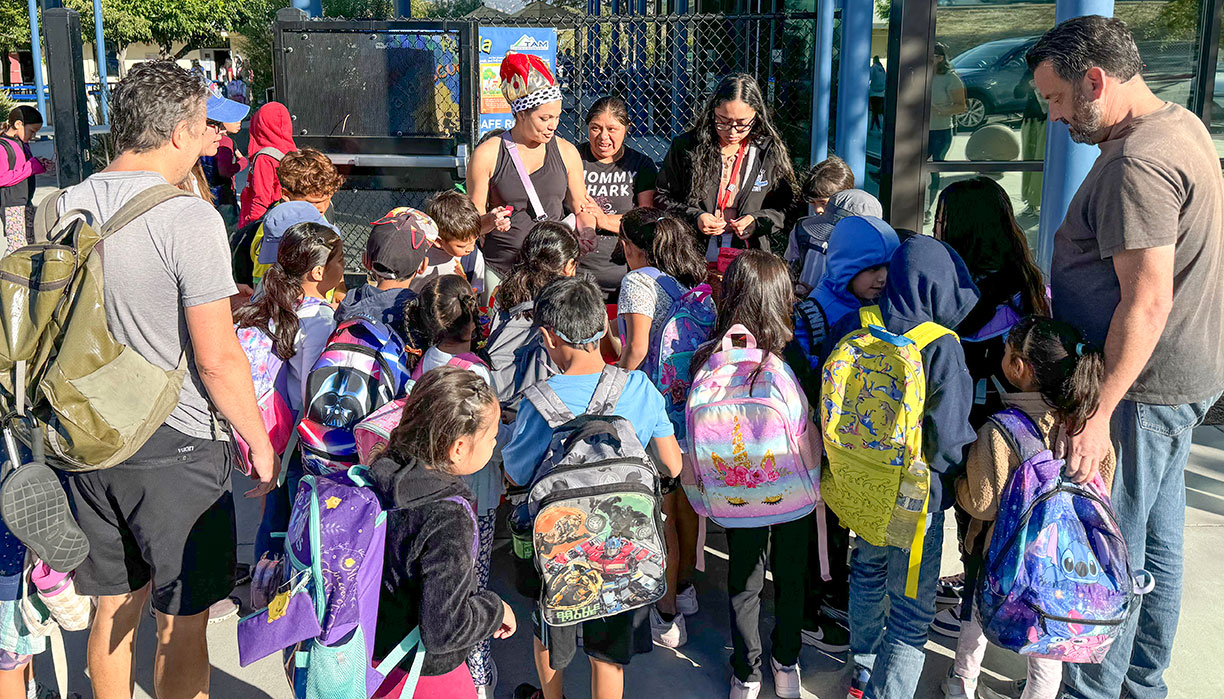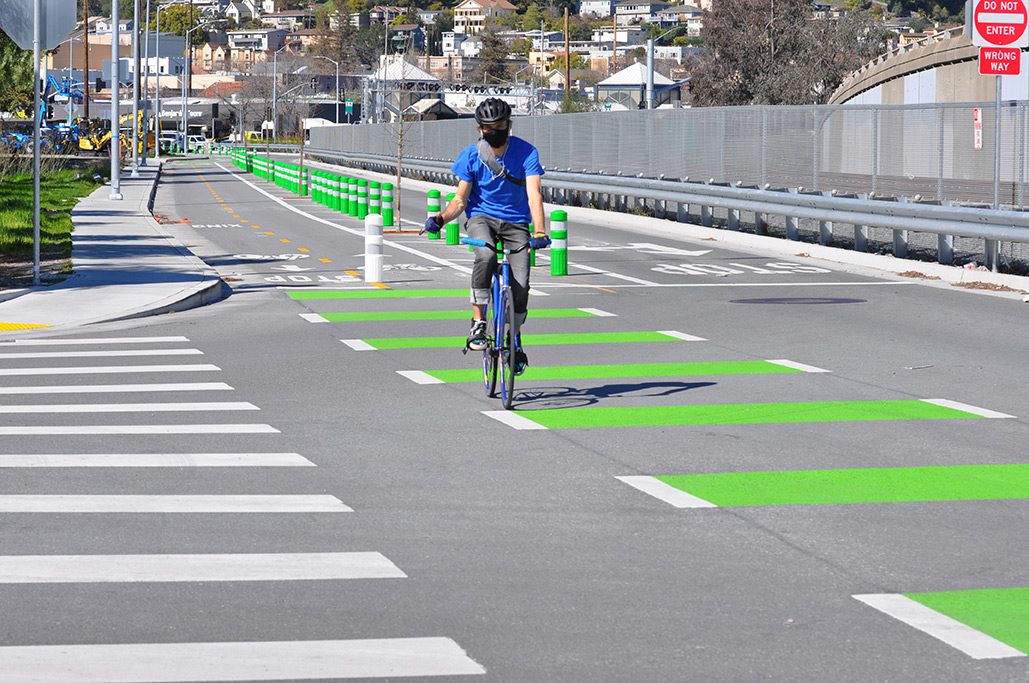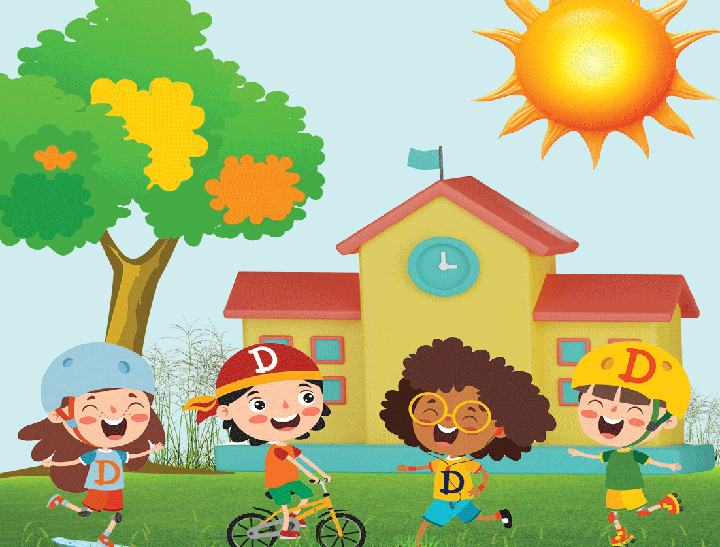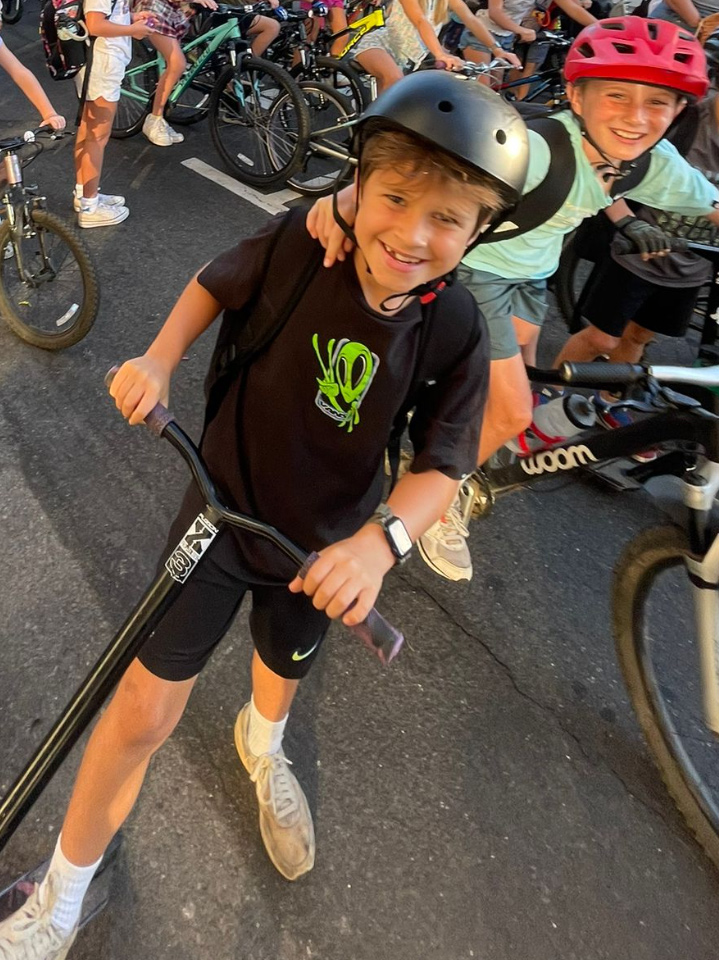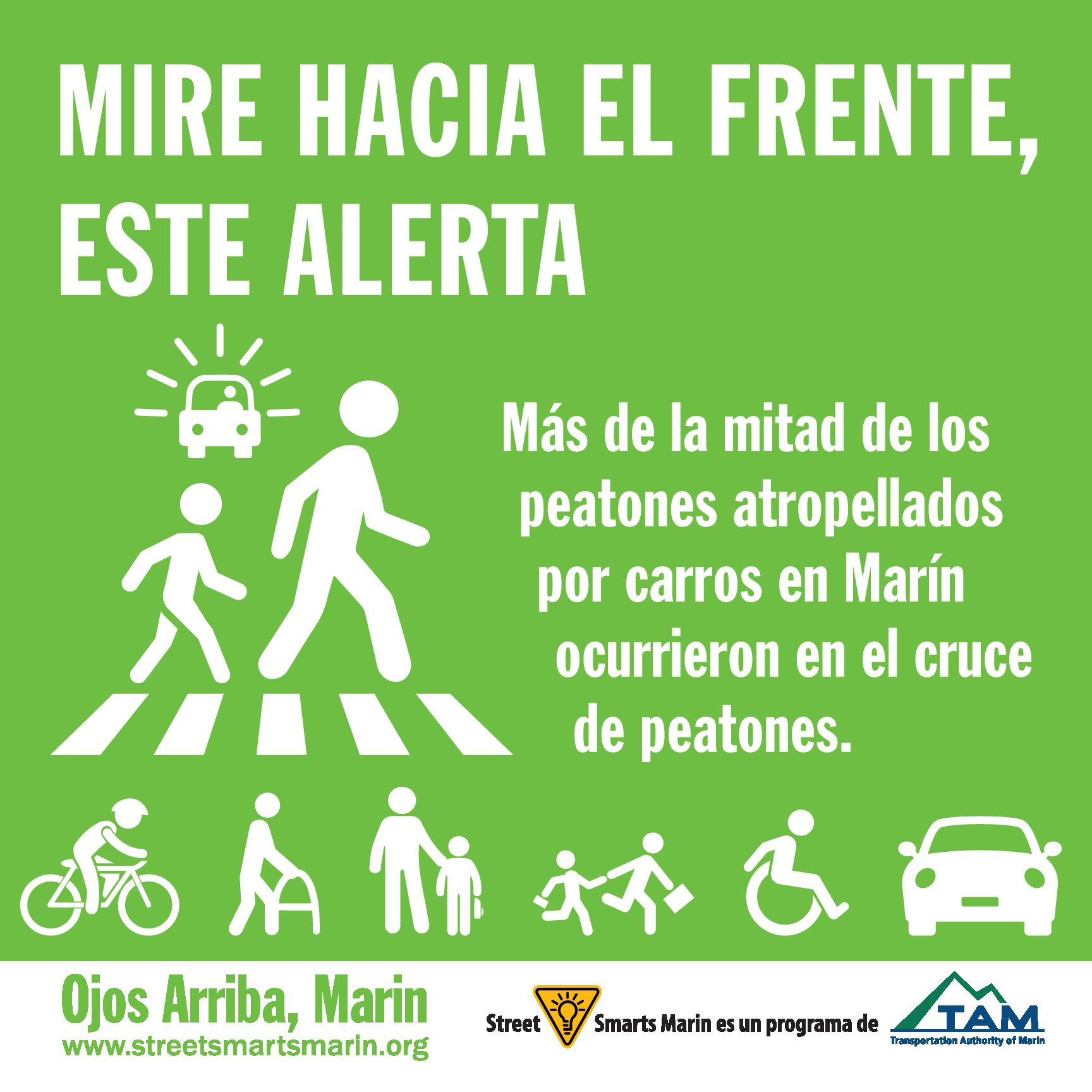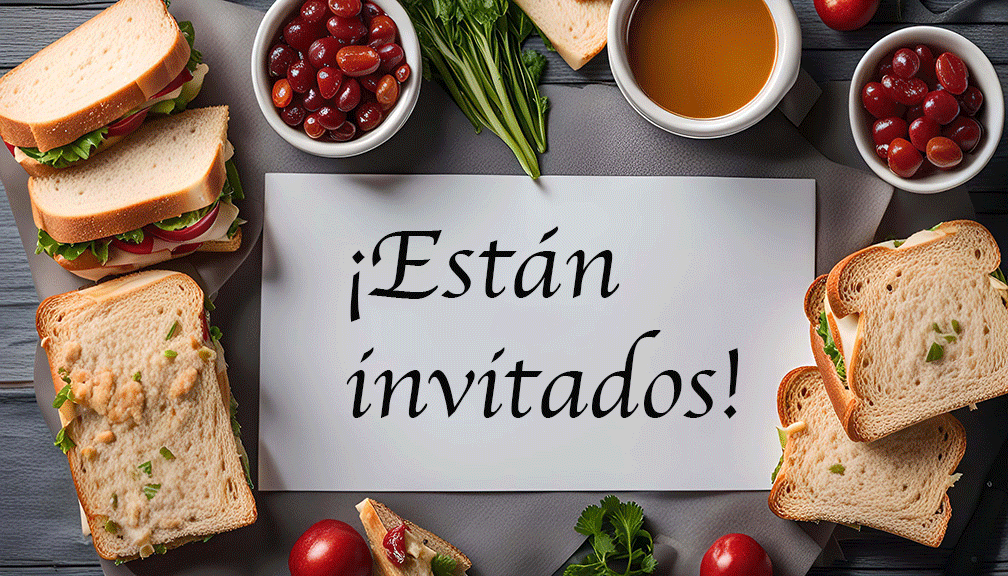
SR2S Spanish Newsletter Winter 2025
Almuerzo de voluntarios de
Rutas Seguras
Únase a nosotros para el almuerzo de voluntarios de Rutas Seguras a las Escuelas el 13 de febrero de 10:30 a. m. a 12:30 p. m. en la oficina de la Autoridad de Transporte de Marín (900 5th Street, Suite 100, San Rafael). Póngase al día con los planes para la primavera, socialice con sus compañeros voluntarios y recoja sus suministros. Confirme su asistencia a Monica o Mira.

Mejoras de infraestructura Benefician
a Estudiantes en Corte Madera y Larkspur
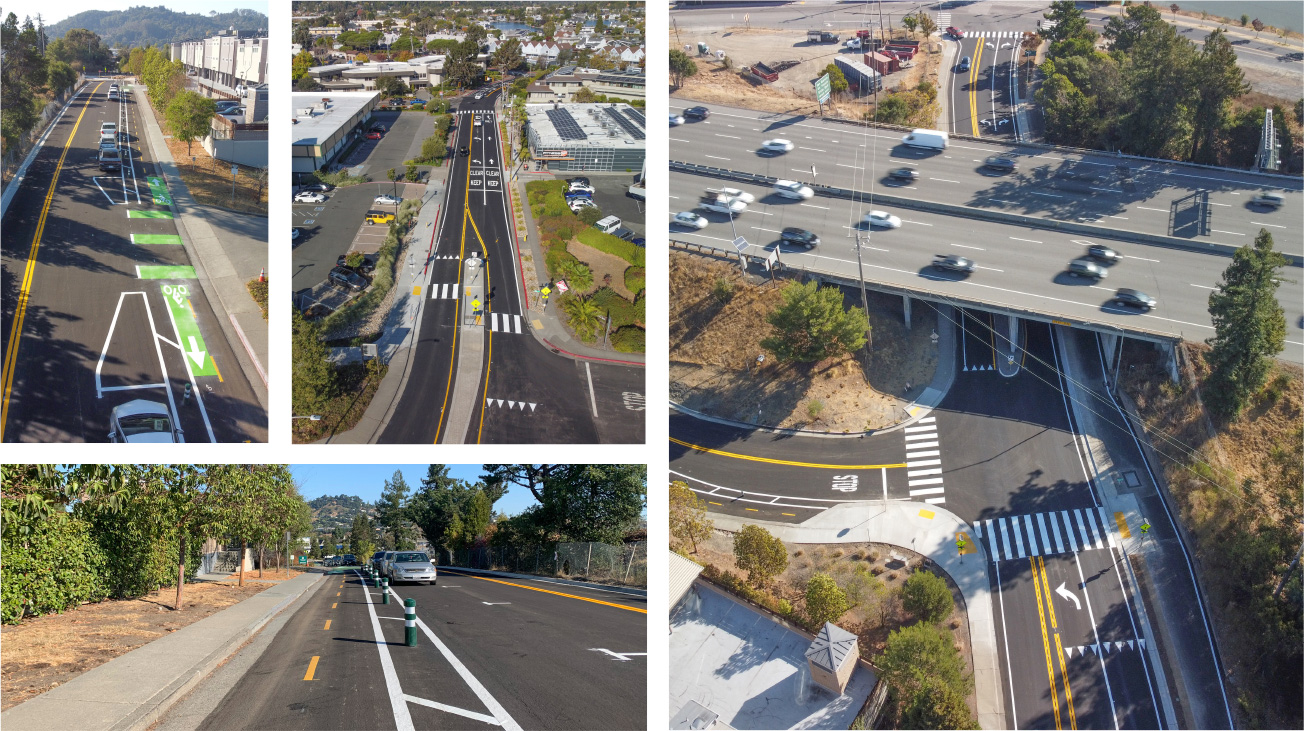
Las mejoras se centraron en las intersecciones de Wornum/Nellen y Fifer/Nellen en Corte Madera, cerca de la autopista 101.
Medidas Enérgicas contra las Motocicletas Eléctricas: Escuelas, Policía y Activistas Presionan por Más Regulaciones
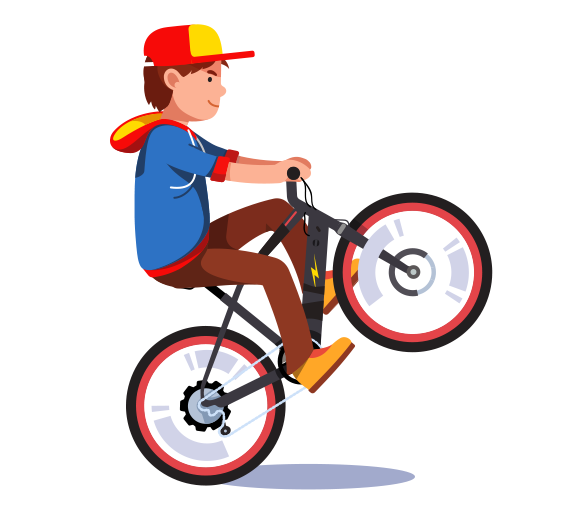
Los programas de registro de bicicletas han reducido el número de motocicletas eléctricas en los estacionamientos escolares, especialmente en las escuelas intermedias, aunque persisten algunas infracciones fuera de los campus, lo que ha provocado medidas policiales. Defensores como CalBike (una organización sin fines de lucro que promueve el ciclismo en California) piden regulaciones más estrictas para combatir las motocicletas eléctricas ilegales, que dañan la reputación de las bicicletas eléctricas legítimas. Enfatizan la necesidad de una mayor aplicación de la ley y educación de los consumidores sobre las clasificaciones de bicicletas eléctricas.
El Grupo de Trabajo sobre Seguridad de las Bicicletas Eléctricas para Jóvenes del Condado de Marin está lanzando una campaña para crear conciencia sobre las bicicletas eléctricas legales, promover la seguridad y fomentar las compras locales. El comité se formó como recomendación del Gran Jurado Civil del Condado de Marín, que exige mensajes, educación, políticas y estrategias para abordar los riesgos para los jóvenes derivados de las bicicletas eléctricas.
Las motocicletas eléctricas disminuyeron en las escuelas intermedias, pero todavía hay muchas en las escuelas secundarias
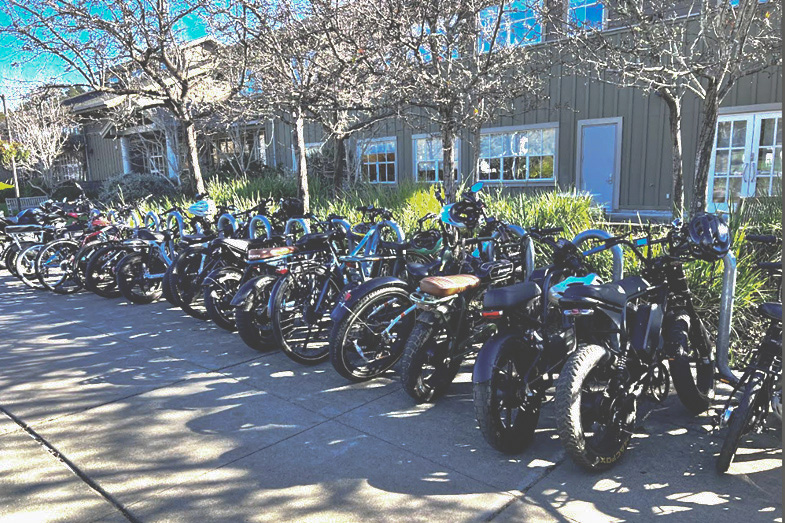
En todo el condado, las motocicletas eléctricas que no cumplen con las normas en las escuelas intermedias disminuyeron de abril a diciembre, gracias a sólidos programas de registro de estacionamiento en los campus.
Sin embargo, este progreso se ve compensado en parte por un aumento en el estacionamiento fuera del campus, que las autoridades están abordando. En las escuelas secundarias aumentaron las ruedas eléctricas que no cumplen con las normas, lo que indica la necesidad de políticas de estacionamiento más estrictas. En estas escuelas, el 79% de estos aparatos no cumplen con las normas, un aumento del 20% desde abril. Este aumento se debe a la popularidad de los dispositivos de aceleración que pueden exceder los límites legales de velocidad. El porcentaje probablemente sería mayor si se incluyeran los vehículos que estacionan fuera del campus.
Medidas Policiales contra las Motocicletas
Eléctricas Ilegales

En respuesta a las crecientes preocupaciones, las autoridades de Mill Valley han tomado medidas como la incautación de motocicletas eléctricas estacionadas fuera del campus. Otras agencias en Marín, incluidas Fairfax, Central Marin y Novato también están tomando medidas enérgicas contra las motocicletas eléctricas de alta velocidad, en particular marcas como Super73, las cuales pueden superar 20 mph usando el control del acelerador.
Una demanda reciente en Fairfax apunta a Super73, alegando prácticas de marketing engañosas. La compañía ha estado vendiendo bicicletas eléctricas de Clase 2 que se pueden alterar, lo que les permite alcanzar velocidades superiores a 28 mph. Esto las convierte efectivamente en motocicletas eléctricas.
.
Consejos para la Prevención de
Lesiones en Bicicletas
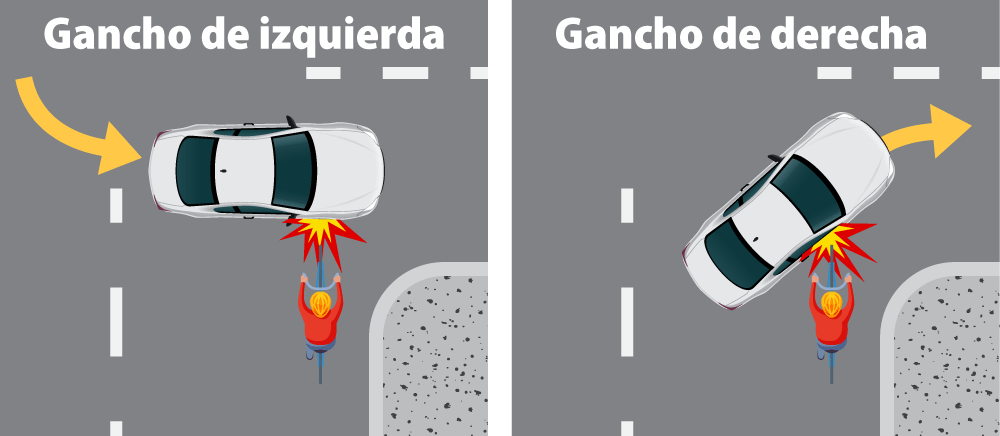
Como ciclistas, sabemos que ser visible es fundamental para la seguridad. La posición en el carril es clave para ser visto por los automovilistas que tal vez no estén buscando a los ciclistas en los carriles para bicicletas antes de girar.
El “gancho de derecha” y el “gancho de izquierda” en las intersecciones son las dos causas más comunes de lesiones en bicicleta. Los “ganchos” son peligrosos porque los automovilistas que giran a la derecha o a la izquierda pueden no ver a un ciclista que se detiene junto a su automóvil.
En cambio, se anima a los ciclistas a “tomar el carril” junto con los vehículos que pasan por la intersección. Esto requiere que el ciclista salga del carril para bicicletas y se coloque en el centro del carril en la dirección del flujo de tráfico. Los ciclistas deben impedir que los automovilistas intenten pasarlos colocándose directamente en el medio de ese carril. Las bicicletas son vehículos de dos ruedas a los que se les permite circular en el mismo carril que los automóviles para ser más visibles.
Antes de que los estudiantes tengan la libertad de viajar de forma independiente sobre dos ruedas, Rutas Seguras a las Escuelas recomienda que los padres enseñen a sus hijos a posicionarse en el carril. Los padres saben mejor cuándo su hijo está listo para viajar de forma independiente, pero esta habilidad avanzada requiere práctica, incluido el escaneo del tráfico y la señalización antes de incorporarse a otro carril.
Los instructores de Rutas Seguras a las Escuelas imparten las clases de Ciclismo Inteligente de MCBC donde se cubre en profundidad el posicionamiento de los carriles. Comuníquese con [email protected] para ser agregado a la lista.
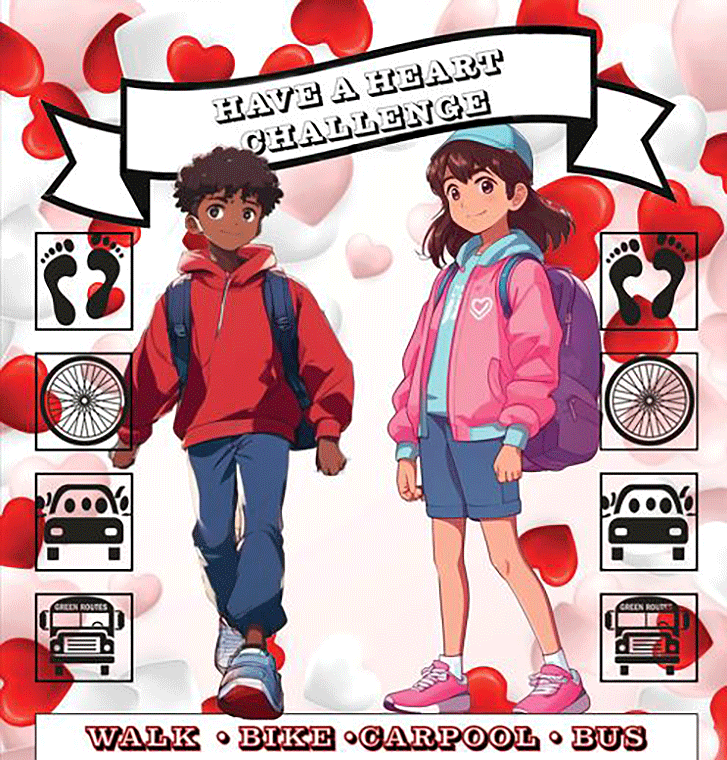
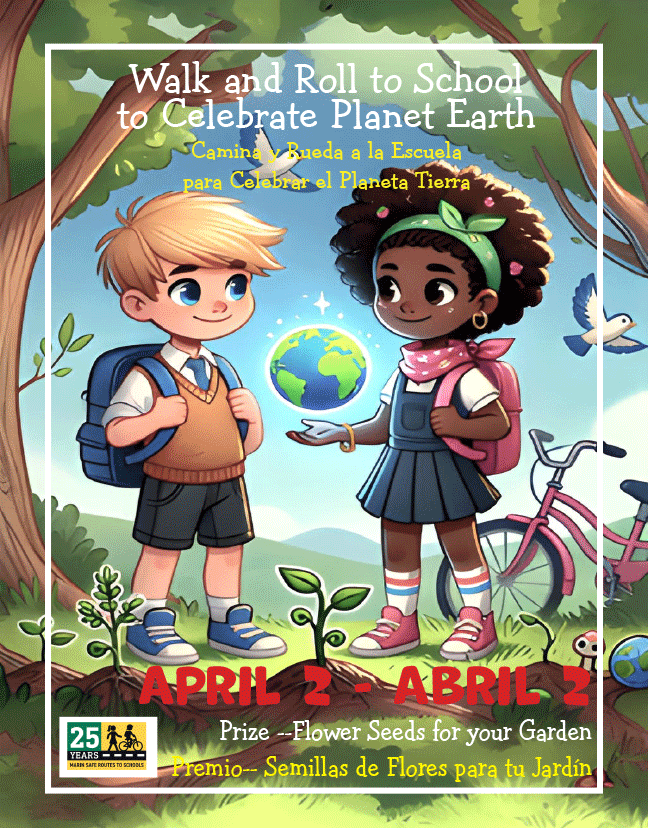
Los carteles de febrero y marzo del “Desafío Ten un Corazón” y de abril del “Desafío Camina y Rueda a la Escuela para Celebrar el Planeta Tierra” anuncian una temporada de desafíos ecológicos y divertidos diseñados para alentar a los estudiantes a caminar, andar en bicicleta o ir en bicicleta a la escuela.
Ver “Lluvia de Actividades Alientan a los Estudiantes a Viajar de Modo Activo”.
Cambios al Programa de Estímulo Recibidos con Entusiasmo
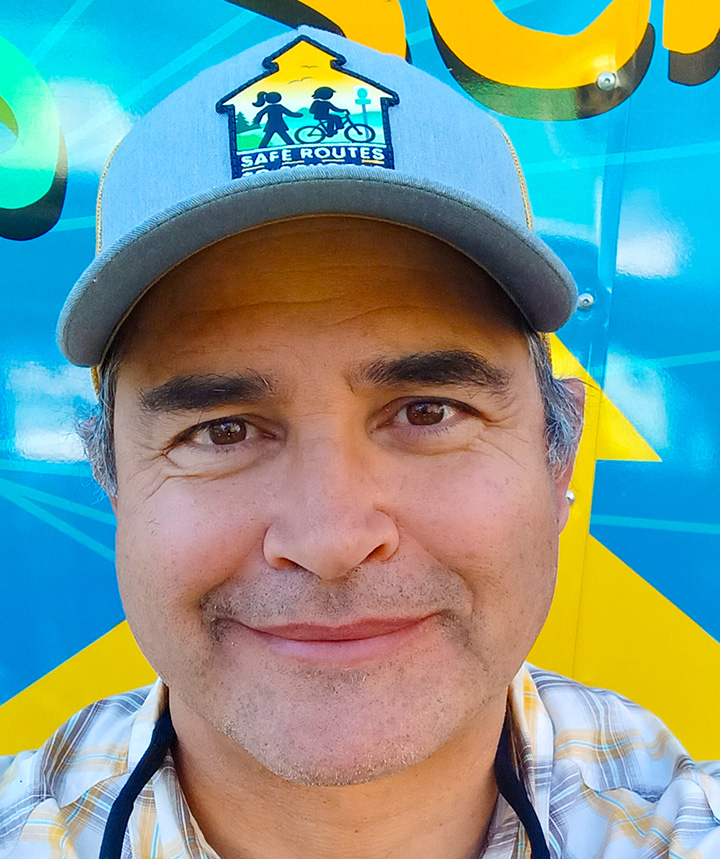
Hijo de inmigrantes colombianos, Dan Hernández es el nuevo instructor principal de Safe Routes to School. Aporta más de 20 años de experiencia en educación ciclista de East Bay, donde desempeñó un papel clave en el desarrollo del plan de educación para ciclistas de REI Adventures. Dan también trabajó con Bike East Bay, pasando de instructor a instructor principal y, finalmente, a codirector. Como instructor y entrenador de ciclismo certificado por la Liga de Ciclistas estadounidenses, está entusiasmado de aportar su experiencia al condado de Marín.
Como es el hijo menor, Dan solía andar en bicicleta para seguirle el paso a sus hermanos mayores. Sus aventuras en bicicleta le ayudaron a desarrollar la confianza necesaria para perseguir horizontes más amplios. Una maestría en ecología lo llevó a trabajar en conservación durante diez años a nivel nacional e internacional. Fue entonces cuando empezó a ver el poder de la recreación para cambiar vidas, comunidades y ecosistemas, ya que las personas quieren proteger los lugares donde se recrean.
Hoy ve todos los beneficios de andar en bicicleta como rayos en una rueda: el vehículo para el crecimiento personal, la alegría y las sonrisas que trae a los niños, la solución al cambio climático, la unificación de la comunidad, la prevención de la contaminación, el dividendo que los padres regresan a tiempo al no estar en el tráfico y beneficios para la salud multigeneracional. Todo eso avanza con cada revolución del pedal. Dan está emocionado de contribuir a este esfuerzo con todas y cada una de las interacciones con los niños, tanto en presentaciones en el aula como en el asfalto de los rodeos en bicicleta.
Lluvia de Actividades Alientan a los Estudiantes a Viajar de Modo Activo
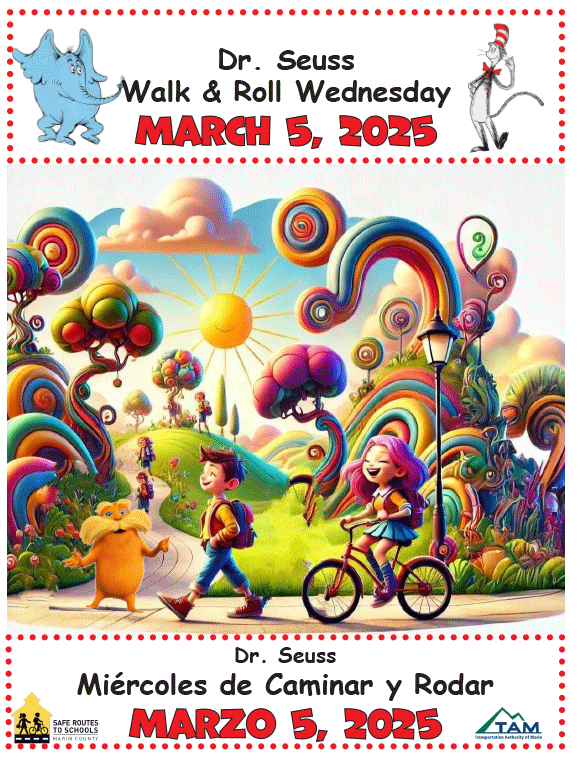
Esta primavera, las escuelas primarias de Marín se están preparando para una temporada de desafíos divertidos y ecológicos diseñados para alentar a los estudiantes a caminar o rodar. Todas las escuelas primarias de Marín podrán elegir tres de las cuatro actividades diferentes que ofrece el programa Rutas Seguras a las Escuelas para animar a sus alumnos a usar los pies para ir a clase.
El año ya comenzó con el desafío Ten Corazón del 3 al 14 de febrero. En marzo, el Día de Caminar y Rodar por Dr. Seuss agregará un toque divertido y temático al evento. En abril, las escuelas pueden elegir entre dos eventos: Conviértelo en una Aventura, un desafío de viaje activo de cuatro semanas o un Día especial de Caminar y Rodar que celebra el Planeta Tierra.
Lo que hace único el desafío Ten Corazón es que no se requiere que los padres voluntarios hagan nada, ya que las familias reportarán sus propios modos de viajar a la escuela. El personal escolar determinará el salón de clases ganador al final del desafío de dos semanas. Los ganadores podrán elegir entre una fiesta de helados y el sorteo de una patineta
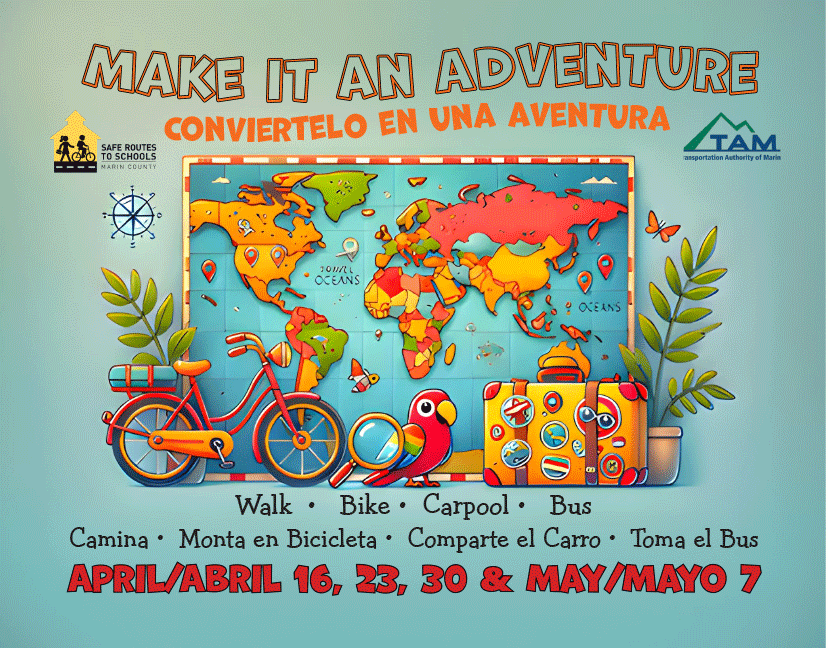
En abril, el desafío Conviértelo en una Aventura hará que los estudiantes caminen y rueden semanalmente. Los voluntarios realizarán un seguimiento de la participación de los estudiantes colocando calcomanías en sus tarjetas una vez por semana durante cuatro semanas. Al finalizar el concurso, que coincide con el Día Nacional de ir en Bicicleta a la Escuela, se sortearán libros con temática de aventuras entre los alumnos con mayor participación.
Las escuelas que opten por no participar en el desafío deben notificar al equipo de Rutas Seguras con antelación. Se les proporcionarán materiales para celebrar el mes de la Tierra con un evento Walk and Roll el 2 de abril. El premio de este evento serán semillas de flores que los estudiantes podrán plantar en sus jardines o en los terrenos de la escuela.
No importa qué evento elijan las escuelas, estas actividades ayudarán a los estudiantes a desarrollar hábitos ecológicos para toda la vida: un paso, pedalear o rodar a la vez.
Las estadísticas de viajes escolares ahora están disponibles en el sitio web de SR2S

Cada semestre se realizan encuestas sobre viajes de estudiantes en todo el condado de Marín para comprender mejor cómo los estudiantes viajan a la escuela. Ahora se puede acceder a estos resultados a través del nuevo Panel de Rutas Seguras a las Escuelas del Condado de Marín, una herramienta interactiva en línea que muestra las tendencias de los modos de viaje en las escuelas participantes. El panel recopila datos de recuentos de aula dirigidos por maestros y realizados dos veces al año, en octubre y mayo. Durante tres días, los profesores registran cómo los estudiantes viajan hacia y desde la escuela. Promediar los datos durante varios días garantiza una instantánea más precisa de los patrones de viaje entre semana y, al mismo tiempo, tiene en cuenta las ausencias de los estudiantes.
El panel ofrece información sobre los principales modos de viaje, la proporción de modos de viaje diarios y el porcentaje de viajes “verdes” (compartidos en auto o autobús) y “activos” (caminando o rodando). Los usuarios pueden filtrar datos por período de encuesta o escuela, permitiéndoles explorar tendencias para campus específicos. La sección de cada escuela muestra la cantidad de estudiantes encuestados y las aulas incluidas, lo que proporciona contenido importante. Un mapa integrado resalta la ubicación de la escuela seleccionada y un panel de descripción ofrece una guía paso a paso para garantizar una navegación fluida.
Actualmente, solo hay datos disponibles para el otoño de 2024, pero con el tiempo se agregarán resultados de encuestas adicionales. Según el último recuento, el 48% de todos los viajes de estudiantes en Marín son ecológicos, con un promedio de 44% en las escuelas primarias y un 61% en las escuelas intermedias.
Este panel es un recurso valioso para las escuelas, las familias y la comunidad. El proporcionar información clara sobre los hábitos de viaje de los estudiantes ayuda a promover los desplazamientos activos y sostenibles, apoyando estilos de vida más saludables y reduciendo el impacto ambiental. Puede acceder al panel a través del sitio web de Safe Routes o utilizando este enlace.


